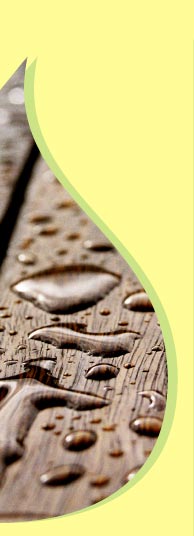


Gluing or bonding wood has been practiced for many centuries. It has been estimated that 70% of wood is adhesive bonded in industrial practice. There are a plethora of wood composite products that rely on adhesives in their manufacturing processes. Wood composite products include: glulam beams, plywood, oriented strand board, particle board and medium density fiber board just to mention a few. Studying the mechanisms responsible for wood adhesive bonding has been an important aspect of wood science research over the past 50 years. For wood bonding, studying adhesion mechanisms requires an understanding of wood material characteristics, surface science, polymer characteristics, and the interactions between polymers and surfaces.
Mechanisms of Adhesion
It is generally accepted that there are 6 primary mechanisms or theories of adhesion. They are:
1) mechanical interlocking,
2) diffusion,
3) wettability,
4) electrostatic,
5) covalent bonding, and
6) weak boundary layers.
Depending on the adhesive or finishing system being used with wood, all of these mechanisms can be applied to describe adhesive bonding. In many instances, more than one mechanism can be in effect for wood adhesive bonding. In mechanical interlocking, the cured adhesive acts as an anchor in the cellular or porous structure of the wood surface. With the diffusion theory, the low molecular weight molecules within the adhesive polymer diffuse into the wood cell wall forming an interphase between the wood and the adhesive. A good example of diffusion bonding in wood is the frozen confection sticking to a wood stick as in a Popsicle®. When functional groups contained in the adhesive polymer are attracted to functional groups on the wood surface, the adhesive will be adsorbed on the wood surface. The chemical bonding between the adhesive and the wood can be primary or covalent. Secondary chemical bonds such as hydrogen bonding, acid-base interactions, and Lifshitz van der Waals interactions can also occur between the adhesive and the wood. Electrostatic interactions occur when the wood surface is ground or positively charged and the adhesive is negatively charged. The opposite charges create an attractive force between the wood and the adhesive. Electrostatic bonding is used as a process in the application of finish coatings to wood and wood products. The theory of weak boundary layers for wood has also been extensively studied mostly due to the impact of mechanical damage on preparing wood surfaces for bonding and the impact of surface aging on inactivating wood surfaces. For many common wood adhesives, mechanical interlocking, diffusion, wettability, and weak boundary layers all contribute to the formation of a wood adhesive bond.
Extrusion of Wood Plastic Composites Article
Adhesion and Surface Issues in
Cellulose and Nanocellulose Article


